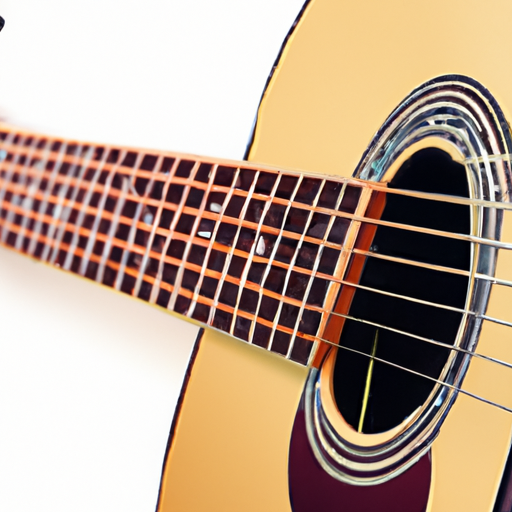
Learning to play the guitar can be an exciting and rewarding journey. However, for beginners, it can also be quite challenging. One of the key factors to becoming a proficient guitarist is mastering essential guitar techniques. These techniques serve as the foundation for playing the instrument and are crucial for building skill and confidence. In this article, we will explore some of the most important guitar techniques that every beginner should learn.

Before diving into more advanced techniques, it is essential to establish a strong foundation. Here are some basic guitar techniques that beginners should focus on:

Having the correct posture while playing the guitar is crucial for both comfort and technique. Sit up straight with your back against the chair and keep your feet flat on the ground. Hold the guitar close to your body, with the neck slightly angled upwards. This posture allows for better finger placement and reduces strain on the neck and shoulders.
Properly tuning your guitar is essential for producing the right sounds. Use a tuner or an online guitar tuner to ensure that each string is in tune. This will help you develop a good ear for pitch and train your fingers to find the right frets.
Learning basic strumming patterns is essential for playing rhythm guitar. Start with simple downstrokes and gradually incorporate upstrokes to create more complex patterns. Practice strumming on open strings and gradually move to chord progressions.
Hold the pick between your thumb and index finger with a firm but relaxed grip. Position it at a slight angle against the strings. This will allow for more control and precision while picking or strumming.
Finger picking is a technique that involves plucking the strings with your fingers instead of using a pick. It adds a unique and melodic sound to your playing. Here are some finger picking techniques for beginners:
Start by practicing the basic finger picking pattern, which involves using your thumb to pluck the bass strings (E, A, and D) and your index, middle, and ring fingers to pluck the treble strings (G, B, and high E). Focus on maintaining a steady rhythm and keeping your fingers relaxed.
Once you have mastered the basic finger picking pattern, try practicing exercises that incorporate different finger combinations. This will help improve coordination and dexterity. For example, practice picking individual strings in a sequential pattern (e.g., high E, B, G, D, A, and low E) or try picking arpeggios on different chords.
Learning finger style songs is an excellent way to apply and refine your finger picking techniques. Start with simple songs that have repetitive patterns, such as "Dust in the Wind" by Kansas or "Blackbird" by The Beatles. As you progress, you can challenge yourself with more complex arrangements.
Chords are the building blocks of music, and learning them is crucial for playing songs and creating your own music. Here are some chord-related techniques for beginners:
Start by learning basic open chords such as C, G, D, A, and E. Practice transitioning between these chords smoothly and without hesitation. As you become more comfortable, you can explore barre chords and more advanced chord shapes.
Mastering common chord progressions will enable you to play a wide variety of songs. Start with simple progressions like the I-IV-V (e.g., C-F-G) or the I-V-vi-IV (e.g., C-G-Am-F). Practice strumming these progressions with different patterns and rhythms.
Smooth chord transitions require practice and patience. One helpful tip is to visualize the next chord shape before making the transition. Keep your fingers close to the fretboard and lift them simultaneously when changing chords. Gradually increase your speed as you become more comfortable.
Alternate picking is a technique that involves alternating between downward and upward strokes with the pick. It adds speed and precision to your playing. Here are some alternate picking techniques for beginners:
Start by practicing alternate picking on a single string. Use a metronome to maintain a steady tempo and gradually increase the speed. Focus on using a relaxed and controlled motion with your wrist.
Practice alternate picking exercises that involve moving across different strings and frets. For example, play a simple scale (e.g., the A minor pentatonic scale) using alternate picking. This will help develop coordination between your picking hand and fretting hand.
Apply alternate picking to songs that feature fast-paced or intricate guitar parts. Some examples include "Sweet Child o' Mine" by Guns N' Roses or "Eruption" by Van Halen. Start at a slower tempo and gradually work your way up to the original speed.
Rhythm techniques are essential for playing in a band or accompanying other musicians. Here are some rhythm techniques for beginners:
Focus on developing a strong sense of rhythm by practicing with a metronome or backing tracks. Start with simple strumming patterns and gradually introduce more complex rhythms.
Practice common rhythm patterns like the down-up-down-up or the bass-strum-bass-strum. Experiment with different accent patterns and syncopation to add variation to your playing.
Choose songs that have interesting rhythm patterns and use them as practice material. Some examples include "Wonderwall" by Oasis or "Brown Eyed Girl" by Van Morrison. Pay attention to how the rhythm interacts with the melody and lyrics.
Hammer-ons and pull-offs are techniques that allow you to create smooth and legato phrasing. They involve using your fretting hand to produce additional notes without picking the string. Here are some hammer-on and pull-off techniques for beginners:
Start by practicing hammer-ons and pull-offs on a single string. Begin with a fretted note, then use a finger on the same string to produce a higher note by "hammering" onto the fretboard or "pulling off" from a higher fret.
Practice exercises that involve hammering-on and pulling-off between different fingers and frets. For example, practice hammering-on from the 3rd to the 5th fret and pulling-off from the 5th to the 3rd fret on the same string.
Apply hammer-ons and pull-offs to songs that feature legato playing, such as "Stairway to Heaven" by Led Zeppelin or "Hotel California" by Eagles. Pay attention to the subtle nuances and dynamics created by these techniques.
Bending is a technique that involves pushing or pulling a string to change its pitch. It adds emotion and expression to your playing. Here are some bend techniques for beginners:
Start by practicing half-step bends, where you bend the string to reach the pitch of the next fret. Use your bending hand to push the string upwards while your picking hand supports the string to maintain tension.
Practice bending exercises that involve bending a string on one fret and then playing the same note on the next fret. For example, bend the 3rd fret of the G string to match the pitch of the 5th fret.
Apply bending techniques to songs that feature expressive guitar solos, such as "Comfortably Numb" by Pink Floyd or "Hotel California" by Eagles. Pay attention to the accuracy of your bends and the control of your bending hand.
Vibrato is a technique that involves adding a slight variation in pitch to a sustained note. It adds depth and emotion to your playing. Here are some vibrato techniques for beginners:
Start by practicing vibrato on a sustained note. Use your bending hand to create a subtle back-and-forth motion while maintaining the pitch of the note. Focus on achieving a smooth and controlled vibrato.
Experiment with different vibrato techniques, such as wide vibrato or narrow vibrato, to create different effects. Focus on using your wrist and forearm to generate the vibrato motion while keeping your hand relaxed.
Apply vibrato techniques to songs that require sustained notes or expressive phrasing, such as "November Rain" by Guns N' Roses or "Little Wing" by Jimi Hendrix. Pay attention to how vibrato enhances the overall musicality of the song.
Mastering essential guitar techniques is a crucial step in becoming a proficient guitarist. By focusing on proper guitar posture, finger picking techniques, chords and progressions, alternate picking, rhythm techniques, hammer-ons and pull-offs, bend techniques, and vibrato techniques, beginners can build a solid foundation and develop their own unique playing style.
In this article, we explored a variety of essential guitar techniques for beginners. We discussed proper guitar posture, tuning the guitar, basic strumming patterns, holding the pick, finger picking techniques, chords and progressions, alternate picking techniques, rhythm techniques, hammer-ons and pull-offs, bend techniques, and vibrato techniques.
Learning essential guitar techniques is an ongoing process. As a beginner, it's important to practice regularly and have patience. With dedication and perseverance, you will gradually build your skills and unlock the vast potential of the guitar. So grab your guitar, start practicing these essential techniques, and enjoy the journey of becoming a skilled guitarist!
For more information and resources on essential guitar techniques for beginners, check out this comprehensive guide.